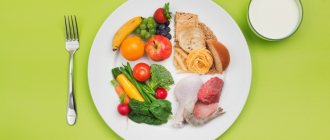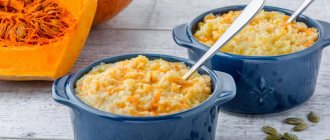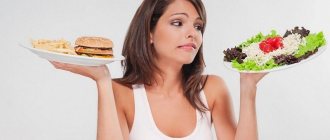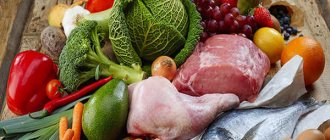- Vegetable pea soup.
None of us like restrictions or strict boundaries, especially if they relate to nutrition. Modern statistics say that 90% of women and men who go on a diet eventually quit it without achieving the desired result, and some even with negative consequences.
Separate nutrition for weight loss is the same lifesaver that does not imply any restrictions or constant discomfort. According to this method of weight loss, it is prohibited to consume products with incompatible ingredients. For example, combine protein and carbohydrate dishes in a meal.
What is separate nutrition?
Did you know that you can become slimmer and healthier without dieting or fasting, simply by combining compatible foods with each other? The more varied foods enter the stomach, the more difficult it is to digest and break them down into simple amino acids and carbohydrates.
The remains of undigested food are deposited in the body in the form of fats and waste, causing constipation and diseases of the gastrointestinal tract in the body.
When consuming foods that are combined with each other, the processes of fermentation and decay do not occur in the body, the condition of the digestive system gradually improves, the body launches a self-cleaning system and becomes resistant to the influence of pathogenic bacteria.
Principles of separate nutrition according to Sheldon
William Herbert Sheldon , the founder of the School of Health, a naturopath, did not have a medical education. He is a graduate of the College of Physical Therapy and the School of Naturopathy and Chiropractic. But he was awarded nine honorary doctorates.
He is the organizer of the Natural Hygiene social movement, the goal of which was to apply the laws of physiology and biochemistry for human health.
The principle of separate nutrition is to eat foods, taking into account their compatibility, and maintaining a certain period of time between meals. Separate nutrition is a diet for some, a lifestyle for others. You can eat everything in this diet, but some to a greater extent and some to a lesser extent. The essence of separate nutrition is to listen to your organs, your body.
- Eat only when you feel hungry:
- Hunger is a signal from the body that it needs energy.
- Some people do not know how to recognize the feeling of hunger, eating away their stress, eating for company, or simply filling their free time with meals.
- Some people suppress their feelings of hunger at certain times and by overeating at others.
- Appetite is mistaken for a feeling of hunger.
- Hunger occurs when the muscles of the stomach contract when it is empty, and feelings of appetite are a consequence of habit and practice, appearing at the time of the set time for eating, the smell, sight and taste of food, seasoning, just the thought of food.
- Do not eat if you are sick, have a high temperature, or have a mental or physical disorder:
- With inflammation, high temperature, and pain, the secretion of digestive juices slows down, resulting in inadequate absorption of food.
- And mental and physical disorders and ailments also affect the gastrointestinal tract.
- Grumbling, quarreling, swearing at the table while eating has a negative impact on health.
- The secretions of the human stomach are influenced by emotion.
- Do not eat before, during, or after work, heavy mental or physical effort:
- Digesting a heavy meal requires the body's full attention.
- When you feel tired, after physical or mental work, food entering the body will lead to indigestion and illness due to low activity of gastric juice.
- In such a state, the body needs rest, and then you can eat.
- Don't drink food:
- No tea, drinks, coffee, cocoa, juices, or milk should be taken after meals.
- Liquid during meals dilutes the concentration of gastric juices and leads to overeating.
- The temperature of the liquid also affects the process of secretion of enzymes and juices: cold drinks, etc. - inhibit digestion; hot drinks - disrupt the tone of the walls, weaken and deprive the stomach of energy. You need to drink water: 10-15 minutes before a meal;
- 30 minutes after the fruit menu;
- 2 hours after the carbohydrate menu;
- 4 hours after a protein meal.
Milk is not a liquid, but a separate food.
- Chew food thoroughly, moistening it with saliva:
- Chewed food processed with saliva is digested faster and absorbed fully.
- Starches and sugars are digested in the mouth.
Rules for separate meals
To achieve the effectiveness of the gastrointestinal tract, you need to be able to eat properly and combine foods without causing fermentation, rotting, flatulence, constipation, and other diseases and disorders.
When compiling a diet for healthy or sick people, it is necessary to take into account the physiological limitations of the digestive function, the inferiority of the secretion of glands, enzymes and juices.
As a result, less energy will be spent on the digestion process and the body will absorb all the vitamins and minerals it receives, restoring strength and energy.
Undesirable food combinations:
- Starch-acid combination
- Acids destroy the ptyalin enzyme in saliva.
- Ptyalin is necessary for the digestion of starch.
- Starch that is not digested in the mouth enters the stomach and awaits the release of pancreatic juice.
- The task for the body has become more complicated; more effort and enzymes are required for digestion.
- Do not mix bread, pasta, bananas with lemon, oranges, sour apples, grapes, tomatoes.
- Starch-protein combination
- Proteins are digested in an acidic environment, while starches are digested in an alkaline environment.
- Do not mix potatoes, pasta with any type of meat, eggs, cheese, or nuts.
- Combination of starch and sugar
- Examples: bread with jelly, jam, honey, pies with jam, pies, sweet pastries.
- When eating such food, the saliva produced contains enzymes for digesting sugar, but does not contain ptyalin.
- Starches are more difficult to digest in the stomach.
- Sugars are digested quite quickly and wait, wandering through the stomach, for starch to be digested.
- Starch-starch combination
- It is advisable not to stir in order to prevent yourself from overeating.
- By mixing one type of starch with another, the body’s entire daily need for carbohydrates will be saturated and you will have nothing to eat the next time you feel hungry.
- Combination of starch and fats
- According to Academician I.P. Pavlov, bread eaten separately does not stimulate the production of gastric juice.
- The latter can be corrected by combining bread and butter.
- Squirrel-protein combination
- Eating nut-meat, cheese-meat, egg-meat together leads to conflict.
- Proteins of different nature require different enzymes, juices, their concentration and duration of exposure for digestion.
- Fat-protein combination
- It is not advisable to mix meat, eggs, nuts with cream, sour cream, butter.
- Fats reduce the amount of acid and gastric juice needed to digest proteins.
- Protein-acid combination
- You can’t eat meat and drink juice from citrus fruits and tomatoes.
- Proteins require an acidic environment for complete digestion, but fruit acids do not contain pepsin, which is found in gastric juice.
- When additional acid enters from the outside, the stomach stops producing acid and enzymes; as a result, proteins are simply not completely digested and begin to rot.
- Protein-sugar combination
- Sugars are not digested in the mouth or stomach; they quickly pass into the intestines.
- For this reason, they inhibit the secretion of gastric juices, slowing down the digestion of proteins.
- There are melon and watermelon separately from everyone else.
- Drink milk rarely and separately from all foods.
Compatibility table for separate food products
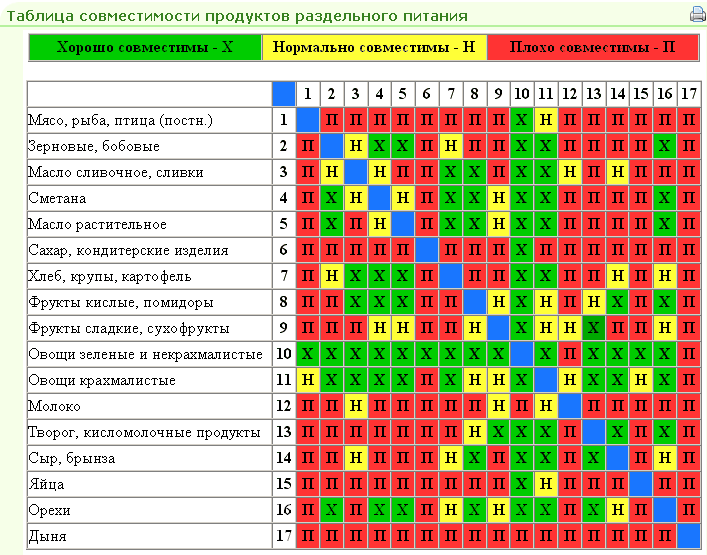
Plan your menu in advance
One of the serious mistakes when switching to separate meals is the lack of a pre-planned menu. For someone who does not know what to snack on at the moment, it is much easier to return to familiar dishes than to endure the feeling of hunger. As a result of frequent violations of the nutritional system, the beneficial effect for the body may be zero.
In the first stages of introducing a new regime, it is easy to return to the previous version, since a person does not experience the usual pleasure from eating. In addition to pre-prepared dishes that comply with the principles of the system, doctors recommend including favorite foods on the menu more often in order to compensate for the lack of pleasure from food.

Source: depositphotos.com
How to create a separate meals menu for the week?
The menu should change depending on the season of the year, the characteristics of your climate and the location of your country.
Study the principles and rules of separate meals and adjust, develop and compose your menu.
Any green vegetable, starch or protein can be replaced with another product from the corresponding group.
For example, replace pumpkin with potatoes; spinach - beet tops. Creating a menu will not be difficult for you. Add variety to your food every day, do not make it monotonous.
Adviсe:
- Starches should be taken in the daytime with a small amount of vegetable salad. Eat starches dry, chew well, coat generously with saliva. Do not add acids to the salad. It is advisable not to mix starch with white and cauliflower cabbage, legumes, garlic, and onions.
- Take protein foods with plenty of salad, two boiled green vegetables, in the evening. Proteins are any meat, fish, eggs, nuts, olives, avocado, cheese.
- It is advisable not to eat fruits between meals; it is better to replace one meal with fruits or eat them half an hour before meals. They are little processed in the mouth or stomach, being digested mainly in the intestines. It is best to eat them for breakfast, without overloading the body, which has not woken up from sleep, giving the opportunity to fully absorb all the vitamins from the fruit.
List of fruits:
- Sweet fruits: Banana.
- Dried fruits (dried dates, figs, pears, prunes, raisins).
- Persimmon.
- Muscat black grapes.
- Sweet apples, plums, grapes (raisins).
- Citruses.
Popular Concepts
The theory of nutrition using a separate method does not limit the diet. However, there are some general rules that need to be followed.
According to Shelton
According to this theory, you should not use together:
- carbohydrate foods with sour foods;
- protein products with carbohydrates;
- 2 concentrated protein products;
- fats with proteins;
- sour fruits with proteins;
- starch with sugar;
- various starches;
- melons and watermelons with other foods;
- milk with other foods.
The basic principles of Shelton's method are outlined in his book “The Right Combination of Foods.”
Fat
A separate category consists of fatty cottage cheese, cream and butter. These foods require both acid and alkali to digest. Therefore, they can be combined with both carbohydrates and proteins.
Vegetables
The compatibility table shows that vegetables are divided into starchy and green. The first category includes carrots, pumpkins, potatoes, zucchini, cauliflower and beets. The combination of these products with sugar causes fermentation in the stomach and intestines. Another group includes white cabbage, bell peppers, radishes, tomatoes, cucumbers, etc.
Greenery
Parsley, dill, cilantro, green onions and lettuce do not contain starch and therefore are used in combination with all products. They are added to salads made from various vegetables. This also includes beet tops, garlic arrows, leeks and celery stalks.
Cereals
Whole grains made from unrefined grains are believed to aid digestion.
However, Herbert Shelton recommended minimizing the consumption of such foods. He believed that cereals were not a product necessary for health and life.
Sweet food
This diet does not imply a complete abstinence from sweets. But they should not be consumed simultaneously with bread, cereals and other carbohydrates. It is best to eat them separately, rather than spread them on bread (for example, honey, jam) or add them to cereals (sugar, jam).
Diet for weight loss with separate meals
Separate meals help you lose weight for several reasons:
- The person does not overeat.
- The number of calories consumed per day decreases.
- Normalization of metabolism.
- Removing excess fluid and toxins from the body.
By adhering to the correct compatibility of products, you will not only become slimmer, but also your complexion and your eyes will acquire a glow and shine. There are also diets based on blood type, for raw foodists, and for pregnant women.
By blood type
The D'Adamo method involves different nutrition for the four blood types. Some products can be very useful for owners of one blood group, useless for the second, harmful for the third, neutral for the fourth.
Group I
What to eat:
- Proteins (meat, fatty fish, category I offal, seafood, nuts).
- Carbohydrates (sprouted grains).
- Vegetables.
- Sweet fruits.
- Dried fruits.
- Vegetable oil.
What you shouldn't eat:
- Pork.
- Products high in gluten (rye, wheat, oats).
- Fatty dairy products.
- Sour fruits and cabbage, corn.
Group II
What to eat:
- Proteins (fish, poultry).
- Carbohydrates (cereals, grains, legumes).
- Vegetable oils;
- Vegetables.
- Fruits.
What you shouldn't eat:
- Dairy products.
- Animal meat.
- Beans.
- Potato.
- Eggplant.
- Mushrooms.
- Olives, tomatoes.
- Exotic fruits.
- Black tea.
- Orange juice.
- Soda drinks.
III group
What to eat:
- Proteins (meat, fish).
- Dairy products Cereals.
- Vegetables.
- Fruits.
What you shouldn't eat:
- Seafood.
- Pork, chicken.
- Olives.
- Tomatoes.
- Corn, lentils.
- Peanut.
- Alcohol.
- Buckwheat, wheat.
IV group
What to eat:
- Proteins (meat, fish, nuts).
- Dairy products.
- Cereals.
- Fruits.
- Green vegetables.
- Berries.
What you shouldn't eat:
- Meat and animal by-products.
- Legumes.
- Corn, wheat.
- Citruses.
- Mushrooms.
- Nuts.
For raw foodists
It is not always possible to predict the outcome of this diet.
Researchers' results:
- a diet for blood group I helps reduce the amount of cholesterol;
- diet for blood group II – lose excess weight and normalize blood pressure;
- diet for blood group III - no visible effects;
- diet for group IV - normalize the level of insulin and cholesterol in the blood.
Raw foodists, both men and women, strictly and completely observe separate nutrition, with the exception of not accepting any heat-treated food.
Raw food menu:
- 50% – berries and fruits;
- 35% – vegetables;
- 10% – starchy foods;
- 10% – concentrates (seeds, nuts, cottage cheese, honey, dried fruits);
- 1% – seasonings (vegetable oils, salt, onions, herbs).
If you follow all the rules every day, weight loss and normalization of metabolism are ensured. It is especially important to diversify the menu to replenish proteins, vitamins and minerals.
For pregnant
For pregnant women, an important rule is to take care of your unborn child. That is why pregnant women must follow the principles of separate nutrition.
After all, if the mother receives all the necessary nutrients, then the child will not suffer from a lack of vitamins.
The diet of the expectant mother must include proteins, cereals, vegetables and fruits, herbs, and dairy products. You are allowed to drink fruit drinks, compotes, and still water. It is better to give up sweets, fried foods and canned foods.
What to eat:
- Cucumbers.
- Green salad.
- Celery.
- Turnip.
- Lean meat and poultry.
- Cereals.
- Cereals.
- Milk, cheeses, yogurt.
- Cottage cheese
- Fruits and vegetables.
“HEALTH” CONCLUSIONS
1. Separate meals can get rid of extra pounds, allow you to change your eating habits and stop overeating. Weight loss in this case is associated with reducing fat intake and limiting eating to one main type of food.
2. Following Shelton's teaching creates a stressful situation for the body. After all, not everyone can withstand this way of eating. And the psychological damage can ultimately outweigh the physiological benefits.
3. If you adhere to separate meals, then at least once every three days you should eat as usual, that is, mix foods. This way, the enzymatic systems of the digestive tract will not lose their ability to digest any food if necessary.
Published: March 26, 2021
Separate meals menu for 7 days
Sample menu for the week in the table:
| Day | Menu |
| 1 | Breakfast: citruses, pineapples. Dinner: vegetable salad, cauliflower, potatoes. Dinner: avocado, lettuce, young zucchini. |
| 2 | Breakfast: apples or pears (or both). Dinner: vegetable salad, beets, carrots, stewed lentils. Dinner: fish, green vegetable salad, leek, spinach. |
| 3 | Breakfast: apricot, peach, cherry. Dinner: broccoli, chard, vegetable salad, artichokes. Dinner: boiled turkey, red cabbage, green beans, tops salad. |
| 4 | Breakfast: melon. Dinner: cauliflower, cucumbers, vegetable salad, buckwheat. Dinner: nuts, broccoli sunflower seeds, tops salad. |
| 5 | Breakfast: berries with cream (no sugar). Dinner: green vegetable salad, herbs, carrots, chestnuts. Dinner: cottage cheese, light vegetable salad, radishes, cucumbers. |
| 6 | Breakfast: watermelon. Dinner: green vegetable salad, stewed eggplant, whole grain bread. Dinner: eggs, young pumpkin, turnip, vegetable salad. |
| 7 | Breakfast: dry fruits: raisins, dried pear, prunes and a glass of curdled milk. Dinner: green vegetable salad, green beans, Chinese cabbage, buckwheat. Dinner: hard cheese, lettuce, tomato. |
Recipes for separate meals
Salad with cheese without mayonnaise
Ingredients for 4 servings:
- 200 grams each of cauliflower and green beans;
- 3 pieces of bell pepper and tomatoes;
- 1 piece of young zucchini;
- 100 grams of cheese;
- herbs, olive oil, lemon juice.
Preparation:
- Boil the cauliflower and green beans in salted water for about 10 minutes.
- Cut bell peppers and tomatoes into strips.
- Grate the zucchini and fry in olive oil.
- Tear the greens with your hands, add the diced cheese to the vegetables, pour in lemon juice, and stir. Salad ready!
Boiled rice with fried vegetables
Ingredients for 4 servings:
- 2 cups rice;
- one package of deep-frozen vegetables;
- onion;
- olive oil.
Preparation:
- Remove the bag of frozen vegetables from the freezer ahead of time.
- Rinse the rice, boil until tender, strain.
- Fry the onion until translucent in a small amount of olive oil.
- Add salt and a mixture of vegetables to the onion. Fry for 10 minutes.
- Add rice to the frying pan and fry until the rice is heated through.
- Serve sprinkled with herbs.
Baked apple
Ingredients for 4 servings:
- 4 apples;
- 85 g dried fruit mixture;
- 1 tsp. cinnamon.
Preparation:
- Rinse the apples.
- Cut out the core.
- Mix dried fruits with honey.
- Stuff apples with dried fruit mixture.
- Bake in the oven at 1900C for 40 minutes until the apples soften.
- Sprinkle baked apples with cinnamon.
- The dish is ready.
In this article, you learned all the principles and rules of separate nutrition, about the features of the process of digesting food groups, diets based on blood types, raw nutrition and weight loss. You have learned to combine foods for normal digestion.
Eat the best combination of foods, don't overeat, drink clean water every day and be active. Lead a healthy lifestyle, be optimistic and you won’t be afraid of any disease!
Chicken with grapefruit
An unusual combination of juicy chicken meat and aromatic citrus fruit will create a real sensation. You will need:
- Chicken – 1 piece.
- Grapefruit – 2 pieces.
- Garlic – 3 cloves.
- Onions – 2 pieces.
- Dried marjoram and rosemary - 1 tablespoon each.
- Fresh marjoram and rosemary - 6 grams each.
- Vegetable oil – 3 tablespoons.
- Salt and pepper - to taste.
Cooking:
- Chop half an onion on a coarse grater. We do the same with fruit zest and garlic. In one bowl, combine these components, add dry marjoram and rosemary spices, mix everything thoroughly. Salt and pepper the resulting mass, pour in one tablespoon of olive oil and mix everything completely.
- Wash the whole chicken thoroughly, dry it with paper towels and coat the inside with pepper and salt.
- Cut the remaining onion and grapefruit into thin slices and stuff the chicken tightly.
- Place the stuffed carcass on a sheet of parchment paper spread on a baking sheet.
- Place sprigs of aromatic herbs under the chicken skin and rub with the mixture prepared at the first stage.
- We send the processed chicken to a preheated oven at a temperature of 170 degrees for 40 minutes on average.
- We regularly check the meat and water it with the resulting juices.
- In 20-30 minutes, place the remaining onion and grapefruit slices around the bird and continue baking until fully cooked.
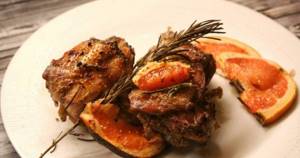
Reviews
Reviews from people about separate meals:
Alexandrova Anastasia
Nutrition and healthy lifestyle specialist and author of myfitnesblog.com. For many years, she has successfully helped women and men lose weight and maintain a beautiful figure.
Restore your drinking regime
The first 2-3 weeks after switching to a new diet, toxins and waste are intensively removed from the body. To successfully cleanse them from them, a person who follows the rules of separate nutrition should consume at least 2-2.5 liters of liquid per day. However, it is not recommended to drink immediately after eating, otherwise the gastric juice will be diluted and the efficiency of food absorption will decrease. It is more advisable to drink water in small portions throughout the day, waiting at least half an hour after meals.

Source: depositphotos.com
